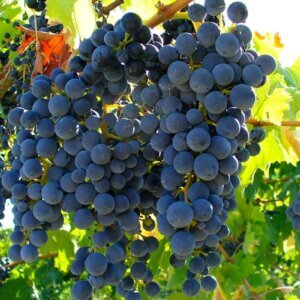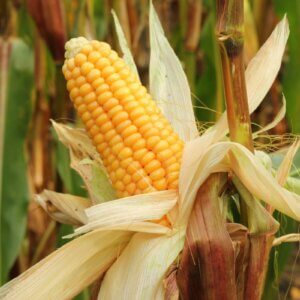Have you ever tried to cultivate land on bedrock? Or grow food in extremely alkaline soil?
How about converting bedrock into workable soil? Tried organic farming in the midst of traditional farmers who are creating superbugs? Ever dealt with pesky and elusive species like green iguanas and black and white tegus?
What do you think it would be like to farm in a place with all of these? Read on and find out what it’s like to organic farm in the Everglades.
I’ll admit, the introduction to this article was intended as an attention grabber, but all the aforementioned is true. Farming in the Everglades (let alone organic farming) brings to question if humans were meant to live there in the first place. And when you realize that people are living there, and thriving, it creates a feeling of awe at the work and dedication put into making it possible.
A Brief Background History on the Everglades
The Everglades is a multimillion-acre wetland preserve that is home to hundreds of species of wildlife. This coastal, grassy marsh is actually a slow-moving river that is home to the Seminole Indians, the native inhabitants of this land.
Beneath the waters of the Everglades is an ocean of limestone. Over time, with sediment compaction, erosion, and general ebb and flow of the tide, the bedrock limestone has become the surface of the ground.
Specifics on Organic Farming
Organic farming among nonorganic farmers is a challenge no matter where you are located. Generally speaking, organic farms are smaller in nature. This means that being a small, organic farmer surrounded by traditional farmers truly makes you the little guy.
Related Post: Why Does Organic Seem Larger Than It Is?
With nonorganic farmers utilizing harsh chemical pesticides and herbicides to alleviate their pest issues, they influence whatever species are plaguing them to adapt and overcome the chemical warfare. In short, it creates superbugs.
When these superbugs come across the humble organic farmer, with their natural pesticide options, it seems like an open field day, a picnic for them to feast on. It makes organic farmers struggle against pests 10 times harder as they fight against pests that aren’t the slightest deterred by their methods.
That’s what organic farmers everywhere deal with.
The Everglades provides more human-created challenges because species that previously didn’t exist there suddenly have found themselves in this environment — which happens to be a beneficial environment for them. Perhaps you’ve heard about boa constrictors, anacondas, iguanas, tegus, and many other reptiles taking over the Everglades?
After intentional releases into the environment (from pet owners who no longer wanted them), and accidental releases from pet stores after hurricane damage, the Everglades is now home to many exotic species.
These species are changing the ecosystem there. Whether it’s for better or worse is truly irrelevant because they are there now, and getting rid of them is highly unlikely.
With that said, many of these species are creating new challenges for farmers. Tegus sneak into sweet potato beds at night and eat the green cover. Iguanas are nearly as bad as goats as they eat all the loose-leaf lettuce babies and turnup tops.
Solutions for these problems: Building small fences around every garden plot, paying big bucks for reptile removers to come to your property, or personally trying to remove them.
Other problems include finding half-frozen and stiff iguanas laying around your property after a hard frost has unexpectedly come through and caused them to fall out of trees at night. Or finding a large boa constrictor slithering through your fields.
Cultivating Bedrock
Essentially, this natural history background means that much of southern-most Florida’s soil is just a few inches deep before you meet the limestone bedrock.
If you visited Miami, or any human-cultivated areas south of Miami, and you’ve seen trees, you can almost guarantee yourself that these trees have been planted with great care. By this I mean, to plant any trees there, the bedrock first has to be excavated for them to have room to grow. Excavating bedrock is (to say the least), difficult and requires heavy machinery, time, and money.
Naturally occurring trees in the Everglades have grown slowly, and they have woven their roots in and among the bedrock, finding space wherever they can. It has been a long process for them, and for this reason, all human-cultivated trees have been planted in squares created by bedrock excavating machinery.
This offers another challenge to organic farming as there’s little to no soil present. It means that all farmland first has to be excavated or heavily tilled. Next, great care and time must be put into creating soil through composting practices and continual tilling of the bedrock. This process isn’t only inconvenient, it’s pricey and time consuming.
One lucky part of Everglades farming is that due to the high humidity and temperatures, composting practices happen a bit quicker than in drier environments. Quicker composting definitely helps aid in creating more viable soil.
In order to make garden beds on the organic farm in the Everglades, we had to go through many stages. Broad-forking the dense soil was a constant, ongoing process that was highly labor intensive and difficult. Oftentimes, different field workers took turns broad-forking rows to save energy and strength, and protect themselves in the intense, humid Florida heat.
Once this process was finished, the freshly upturned soil was broken down a step further with heavy, hard-pronged rakes that were used to break large chunks of soil into smaller pieces and generally smooth the soil.
Next, different components were added to the soil to help invigorate it further. This ranged from silica, worm castings, and compost (often, all three).
Limestone Impacts on Soil Composition
Limestone, as incredibly beautiful as it looks, is very difficult to work with when it comes to farming.
Limestone-infused soils are extremely alkaline. To fix this problem, different ingredients need to be added to the soil to balance out the alkalinity.
In the case of the organic farm where I worked, sulfur was added to the soil and left to sit for a few months to integrate the sulfur and balance the pH.
I hope this gave you some insight on what organic farming in the Everglades is like. This was my experience working on an organic farm where nearby farms were nonorganic.










































Leave a Reply